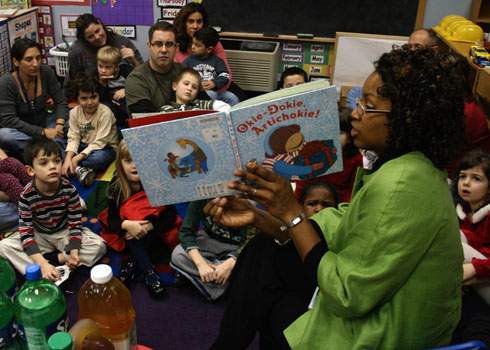“How’s it going?” I asked Susan during our follow-up phone coaching session. A second-grade teacher, Susan had recently completed the first weekend of the Cultivating Awareness and Resilience in Education (CARE) mindfulness-based teacher professional development program, and had begun practicing bringing a more mindful approach to her teaching.
“Wow!” she said, “I was amazed this week. Instead of raising my voice, I tried taking a deep breath and calming myself down. I can’t believe how well this worked. The kids actually began to calm down too.” Over the past three years, I’d heard similar stories from teachers applying CARE to their interactions with their students.
CARE, a federally-funded research project being conducted by the Pennsylvania State University, in collaboration with the Garrison Institute, couldn’t have come at a better time. With budget cuts and the increasing demands of high-stake testing, teachers’ stress is at an all-time high. Add a growing number of students with emotional and behavioral problems to that equation and it isn’t hard to see why teachers are having a rough time. In fact, nearly 50 per cent of teachers leave the field within their first five years. The National Commission on Teaching and America’s Future (2007) estimates this attrition costs U.S. public schools more than $7 billion per year.
A mindfulness-based approach may be exactly what they need to help them manage the emotional stress and to be better teachers. Research has shown that increased levels of mindfulness are associated with improvements in psychological functioning across many domains. Mindfulness enhances self-regulatory processes that buffer against psychological distress and promote general well-being and compassion for self and others.
Mindfulness may help teachers provide emotional support to students. Mindfulness is associated with perspective taking and empathetic responding, relatedness and interpersonal closeness, and emotion communication, and anger management. Therefore, mindfulness may help a teacher be more responsive to individual students and to recognize “teachable moments” more frequently.
Teaching is an extremely emotionally-demanding profession. Fortunately, studies show that mindfulness-based interventions may promote resilience and reduce the emotional exhaustion that precedes burnout. This may promote enjoyment of teaching and help teachers maintain their commitment to the profession and their care and compassion for their students.
Mindfulness-based interventions promote psychological flexibility, and the ability to reflect upon one’s internal and external experience from a broader perspective, which provides a wider variety of interpretations of and responses to stressful situations. As a result, such interventions may be ideally suited to help reduce teachers’ tendency to make automatic, reactive appraisals of student behavior that contribute to emotional exhaustion and support a mental set associated with effective classroom management.
Mindfulness may also support reflective practice. In his book Mindsight, Dr. Daniel Siegel compares the experience of reflection as a tripod with three “legs” of openness, observation and objectivity. Openness allows us to accept things as they are rather than focusing on how things “should” be. Observation is the ability to notice what is happening while it is occurring, allowing us to disengage from automatic behaviors and habitual reactivity. Objectivity allows us to experience a thought or a feeling without getting swept away by it. These three dimensions support a reflective approach to teaching.
While still in the preliminary stages of the research, CARE has demonstrated promising results. In previous evaluation studies, teachers reported that the intervention improved their awareness and acceptance of emotional states. This helped reduce work stress and helped them respond, rather than react, to challenging student behavior, which improved the classroom climate. Many reported improvements in the relationships with their students, the kids’ parents, and co-workers as well.






